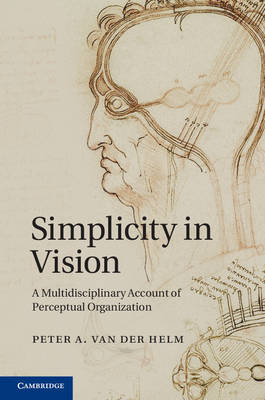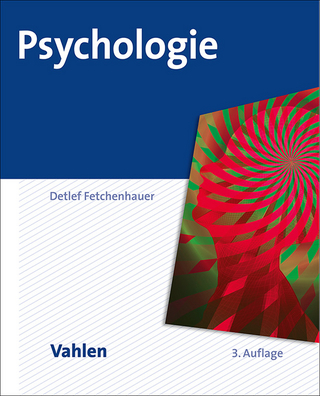
Simplicity in Vision
A Multidisciplinary Account of Perceptual Organization
Seiten
2014
Cambridge University Press (Verlag)
978-1-107-03434-1 (ISBN)
Cambridge University Press (Verlag)
978-1-107-03434-1 (ISBN)
Simplicity in Vision explores the idea that our visual system yields the simplest stimulus organizations. Integrating theoretical, empirical and tractability findings on this idea, it presents an assessment of the veridicality of simplicity, a comprehensive understanding of symmetry perception, and a cognitive architecture relating neuronal synchronization to quantum-like feature processing.
Perceptual organization is the neuro-cognitive process that enables us to perceive scenes as structured wholes consisting of objects arranged in space. Simplicity in Vision explores the intriguing idea that these perceived wholes are given by the simplest organizations of the scenes. Peter A. van der Helm presents a truly multidisciplinary approach to answer fundamental questions such as: Are simplest organizations sufficiently reliable to guide our actions? What is the nature of the regularities that are exploited to arrive at simplest organizations? To account for the high combinatorial capacity and speed of the perceptual organization process, he proposes transparallel processing by hyperstrings. This special form of distributed processing not only gives classical computers the extraordinary computing power that seemed reserved for quantum computers, but also explains how neuronal synchronization relates to flexible self-organizing cognitive architecture in between the relatively rigid level of neurons and the still elusive level of consciousness.
Perceptual organization is the neuro-cognitive process that enables us to perceive scenes as structured wholes consisting of objects arranged in space. Simplicity in Vision explores the intriguing idea that these perceived wholes are given by the simplest organizations of the scenes. Peter A. van der Helm presents a truly multidisciplinary approach to answer fundamental questions such as: Are simplest organizations sufficiently reliable to guide our actions? What is the nature of the regularities that are exploited to arrive at simplest organizations? To account for the high combinatorial capacity and speed of the perceptual organization process, he proposes transparallel processing by hyperstrings. This special form of distributed processing not only gives classical computers the extraordinary computing power that seemed reserved for quantum computers, but also explains how neuronal synchronization relates to flexible self-organizing cognitive architecture in between the relatively rigid level of neurons and the still elusive level of consciousness.
Peter A. van der Helm is Visiting Professor at the Laboratory of Experimental Psychology at the University of Leuven (KU Leuven), Belgium.
Prologue: levels of vision, description, and evaluation; Part I. The Theoretical Cycle: 1. Visual information processing; 2. Veridicality by simplicity; Part II. The Empirical Cycle: 3. Transparent holographic regularity; 4. Symmetry perception; Part III. The Tractability Cycle: 5. Transparallel processing; 6. Cognition by synchronization; Epilogue: towards a Gestalt of perceptual organization.
| Erscheint lt. Verlag | 6.2.2014 |
|---|---|
| Zusatzinfo | 12 Tables, black and white; 12 Halftones, unspecified; 103 Line drawings, unspecified |
| Verlagsort | Cambridge |
| Sprache | englisch |
| Maße | 156 x 235 mm |
| Gewicht | 790 g |
| Themenwelt | Geisteswissenschaften ► Psychologie ► Allgemeine Psychologie |
| Geisteswissenschaften ► Psychologie ► Verhaltenstherapie | |
| ISBN-10 | 1-107-03434-5 / 1107034345 |
| ISBN-13 | 978-1-107-03434-1 / 9781107034341 |
| Zustand | Neuware |
| Informationen gemäß Produktsicherheitsverordnung (GPSR) | |
| Haben Sie eine Frage zum Produkt? |
Mehr entdecken
aus dem Bereich
aus dem Bereich
Techniken der Verhaltenstherapie
Buch (2024)
Julius Beltz GmbH & Co. KG (Verlag)
35,00 €


